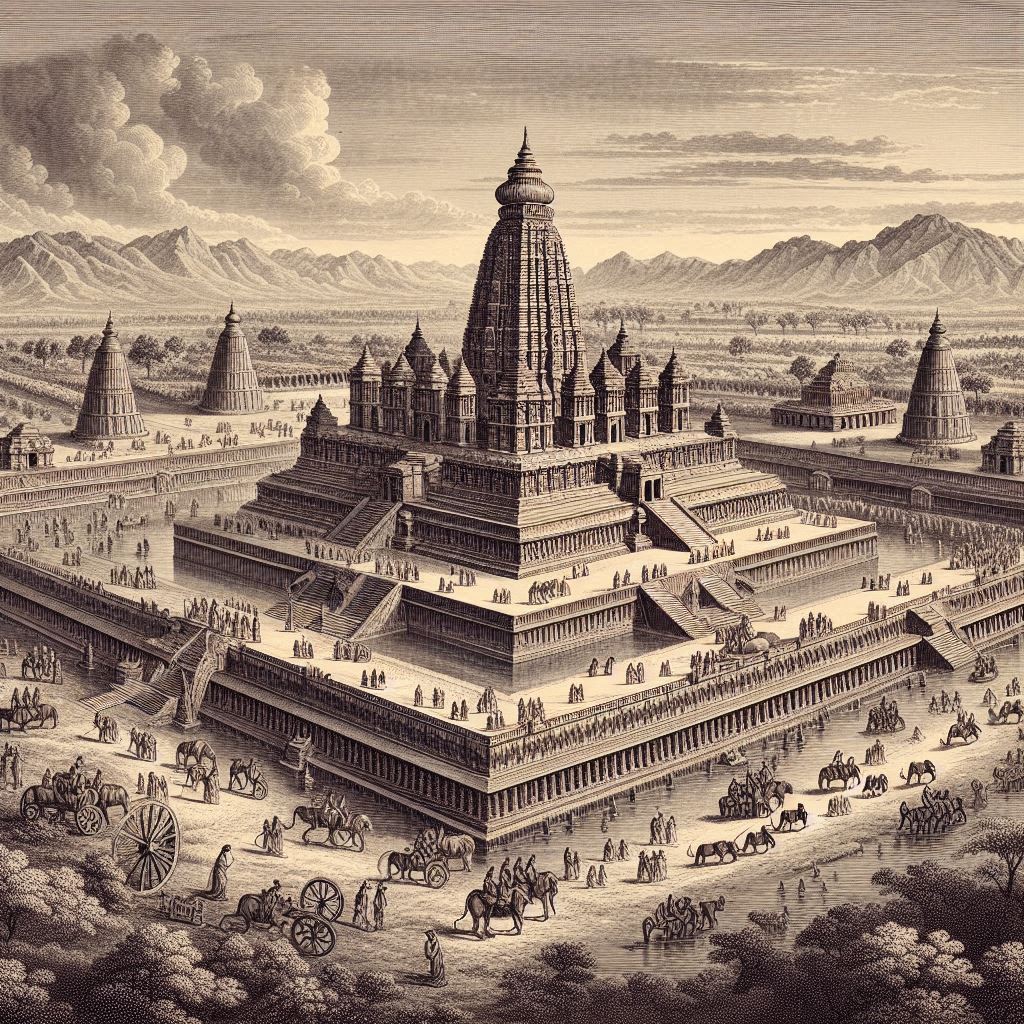How Nalanda, the world’s first residential university, was reborn after a millennium” from India Today News captures the essence of the article. It highlights the recent inauguration of the new Nalanda University campus by Prime Minister Narendra Modi, emphasizing its role in reviving the ancient legacy of Nalanda Mahavihar. Once a premier center of learning in the medieval era, the new campus is set to rekindle the scholarly spirit of its predecessor with a diverse academic program. This initiative is poised to enhance India’s stature in the global educational landscape and promote the spread of knowledge.
History of Nalanda University
Nalanda University, an ancient seat of learning in the Magadha region (now Bihar), was founded in the 5th century CE. It stood near the city of Rajagriha (now Rajgir) and was in proximity to Patliputra (now Patna). Renowned as the globe’s pioneering residential university, it attracted scholars from diverse regions such as Korea, Japan, China, Mongolia, Sri Lanka, Tibet, and Southeast Asia. The institution gained worldwide recognition and prospered under the Pala dynasty’s support in the 8th and 9th centuries. The curriculum at Nalanda University encompassed a wide array of disciplines including medicine, Ayurveda, Buddhism, mathematics, grammar, astronomy, and Indian philosophy. Nestled in the historical Magadha region, now known as Bihar, Nalanda University was established in the 5th century CE. Located close to Rajagriha (modern-day Rajgir) and near Patliputra (present-day Patna), it was celebrated as the world’s first residential university. It drew intellectuals from across Asia, including Korea, Japan, China, Mongolia, Sri Lanka, Tibet, and Southeast Asia. The university flourished with the patronage of the Pala dynasty during the 8th and 9th centuries and offered a comprehensive curriculum that included medicine, Ayurveda, Buddhism, mathematics, grammar, astronomy, and Indian philosophy.
Interesting Information about Nalanda University
Ancient Origins: Established in the 5th century CE during the Gupta period, Nalanda University is among the world’s earliest universities.
Scholarly Hub: This ancient university was a prestigious center of learning, drawing scholars and students from regions such as China, Korea, Japan, Tibet, Mongolia, Turkey, Sri Lanka, and Southeast Asia.
Vast Library: Nalanda boasted an extensive library known as “Dharma Gunj” or “Mountain of Truth,” which housed hundreds of thousands of manuscripts in three large buildings.
Wide Curriculum: The university offered a diverse range of subjects, including theology, grammar, logic, astronomy, metaphysics, medicine, and fine arts, catering to both secular and religious studies.
Famed Scholars: It was home to illustrious scholars like Aryabhata, Nagarjuna, Suvishnu, Dharmapala, and Xuanzang (Hsuan Tsang), who traveled from China to study and later teach at Nalanda.
Expansive Campus: Spanning around 14 hectares (35 acres), the university’s campus featured numerous temples, monasteries, lecture halls, meditation halls, and hostels for students and scholars.
Royal Patronage: Various rulers, including Gupta emperors, Harsha of Kannauj, and Pala kings, supported Nalanda, aiding its growth and prosperity.
Monastic Education: Nalanda operated as a monastic institution (Mahavihara) with a structured educational system and residential facilities, primarily for Buddhist monks, but also welcomed non-monastic students.
Destruction and Decline: The university faced destruction in the 12th century CE when Bakhtiyar Khilji attacked it, leading to the burning of its library and the decline of this esteemed learning center.
Modern Revival: Efforts have been made in recent times to revive Nalanda as a global center for education. The Nalanda University (Amendment) Bill passed in 2010, leading to the establishment of a new Nalanda University near the ancient site in Bihar, India.
UNESCO Recognition: In 2016, the ruins of Nalanda Mahavihara (Nalanda University) were designated a UNESCO World Heritage Site, highlighting its historical and cultural importance.
Reference
- Historical Significance: Established in the 5th century CE by Emperor Kumaragupta I, Nalanda University was a major center for learning and is one of the oldest universities in the world. It flourished for over 800 years until it was destroyed in the 12th century (Nalanda University).
- Extensive Library: Nalanda’s library, known as Dharmaganja, housed hundreds of thousands of volumes, including texts on various subjects such as science, medicine, astronomy, and Buddhism. The library was so vast that it is said to have burned for several months when the university was destroyed (Nalanda University).
- International Student Body: Nalanda attracted scholars from across Asia, including China, Korea, Japan, Tibet, Mongolia, Sri Lanka, and Southeast Asia. Famous Chinese traveler Xuanzang studied and taught here, documenting detailed accounts of the university’s academic environment and infrastructure (Nalanda University) (Encyclopedia Britannica).
- Resurgence: The revival of Nalanda University was proposed by former President of India, Dr. A.P.J. Abdul Kalam, in 2006. The idea received support from the East Asia Summit and the Indian government, leading to the re-establishment of the university in 2014. The new campus, designed by renowned architect B.V. Doshi, is an eco-friendly, net-zero carbon footprint facility (Nalanda University) (Encyclopedia Britannica).
- Modern Academic Structure: Today, Nalanda University offers postgraduate and doctoral programs through its five functional schools, including Historical Studies, Ecology and Environmental Studies, Buddhist Studies, Philosophy, and Comparative Religion, Languages and Literature/Humanities, and Management Studies (Wikipedia).
For more detailed information, you can visit the sources directly:
